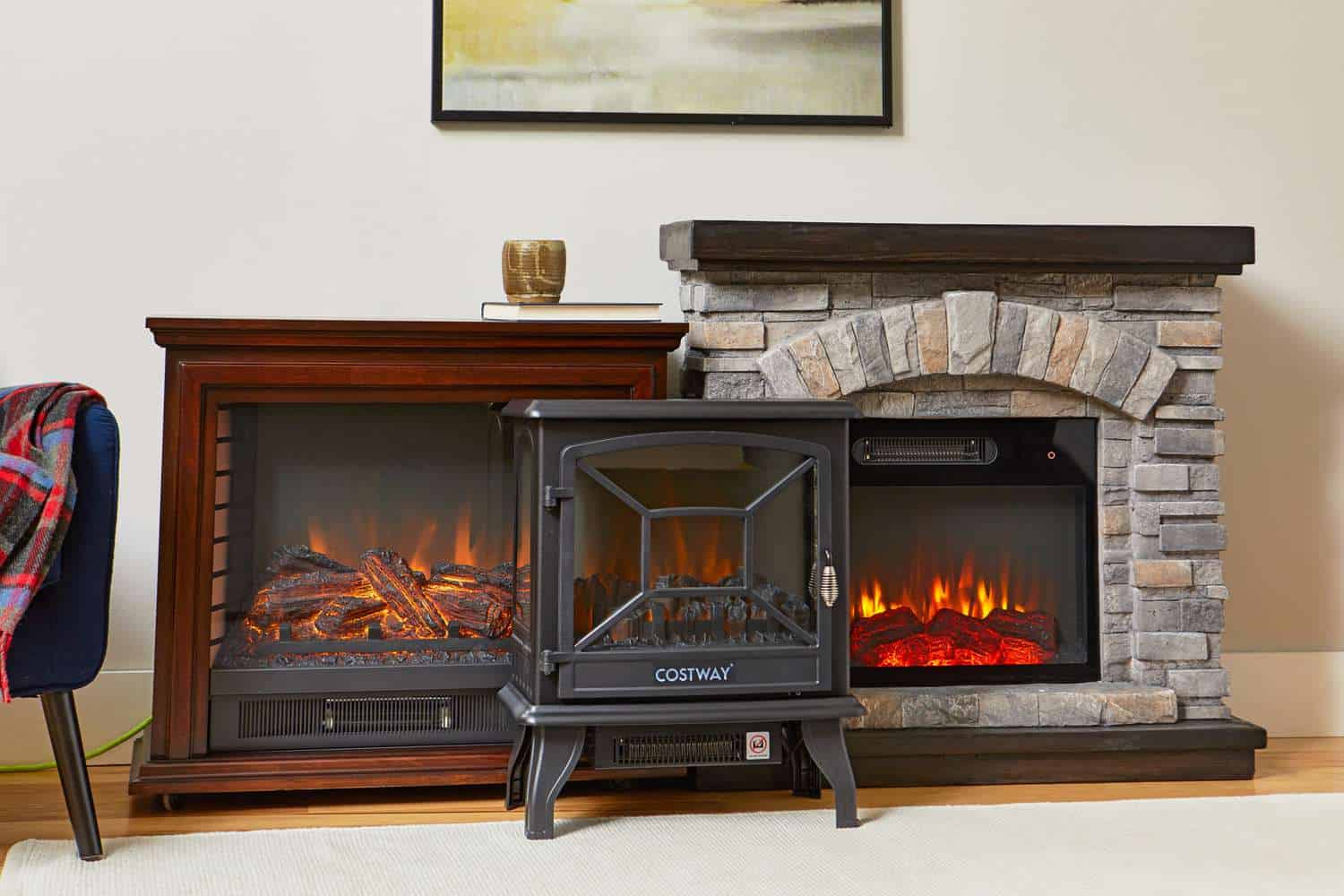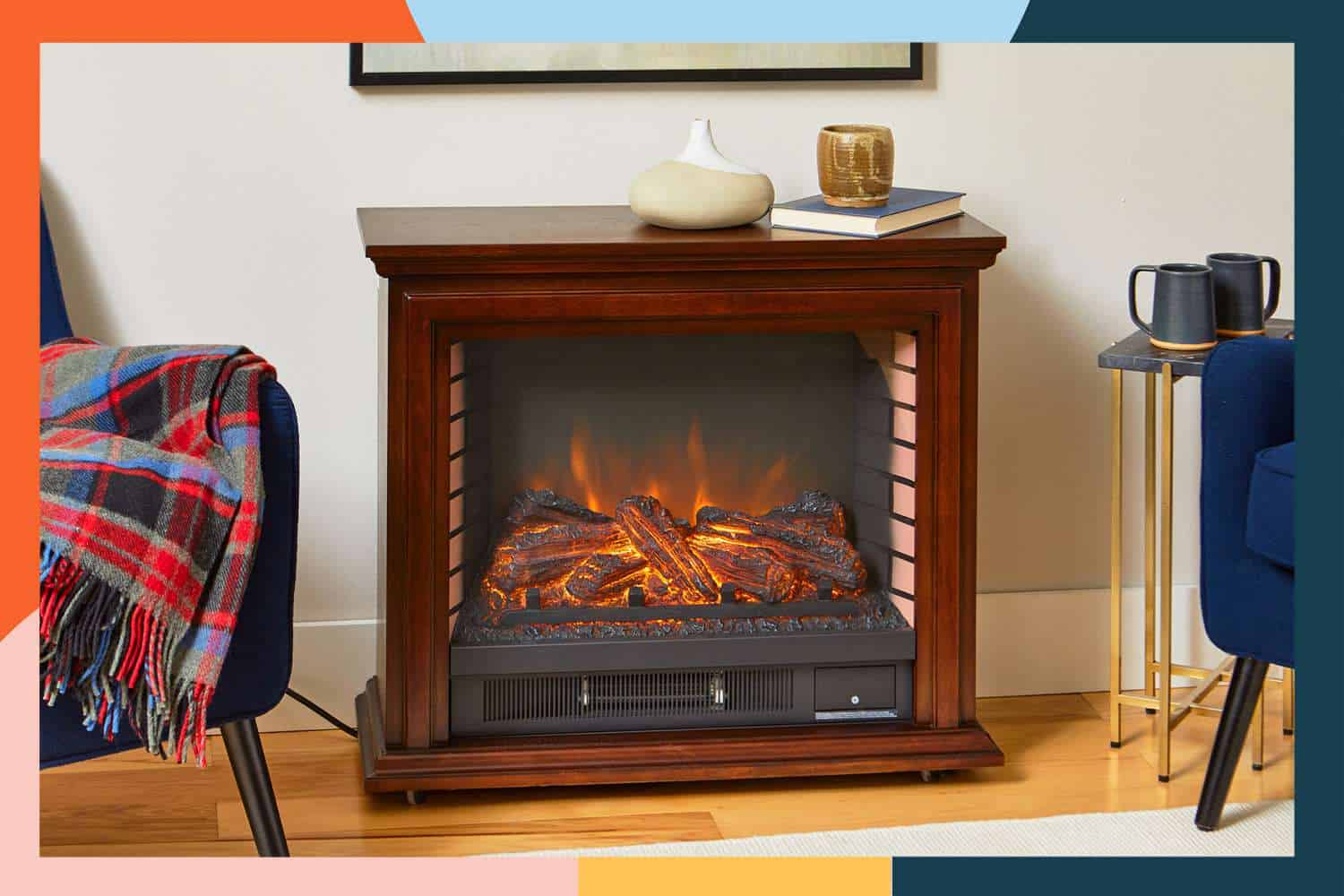Electric fireplaces are kind of like magic. You get the warm, flickering glow of a fire—without the hassle of chopping wood, wrangling with gas lines, or dealing with the smoke that leaves your whole house smelling like a campfire. But while they’re undeniably convenient, one question always comes up: How much electricity do these things actually use?
If you’ve ever hesitated before flipping the switch, wondering what kind of damage it’s about to do to your electric bill, you’re not alone. Let’s break it down—how much power they pull, what that translates to in real dollars, and whether they’re actually worth it.
What Are Electric Fireplaces, and How Do They Work?
First things first: There’s no actual fire in an electric fireplace. If you suspected some next-level sorcery, the truth is slightly less exciting—but still pretty cool.

Image Source: magikflame.com
Inside, you’ve got two key components:
- A heating element – This works like a space heater, using electricity to generate warmth. Some fireplaces use a fan to push the hot air into the room, while others use infrared heat, which warms up objects instead of just the air.
- A flame effect – That flickering glow isn’t fire; it’s just an illusion created by LED lights and a rotating mechanism that mimics the movement of flames. It looks surprisingly real, and here’s the best part: you can turn the flames on without the heat, so you get all the cozy vibes, even in the middle of summer.
Since electric fireplaces don’t rely on burning anything, 100% of the energy they use goes into heating your space. No heat escaping up a chimney, no wasted energy—just straight-up warmth. Considering these factors to estimate the running costs and impact on monthly electricity bills is important.
How Much Electricity Does an Electric Fireplace Use for an Hour?

Image Source: homeadvisor.com
Alright, let’s talk numbers. Most electric fireplaces use 1,500 watts (or 1.5 kilowatts) of power when running on full heat. That’s about the same as a hairdryer or a high-powered space heater.
To figure out how much electricity that translates to, here’s the formula:
Wattage ÷ 1,000 = Kilowatt-hours (kWh) per hour
For a 1,500-watt fireplace:
1,500 ÷ 1,000 = 1.5 kWh per hour
Now, let’s talk money. The average electricity rate in the U.S. is around $0.15 per kWh (this varies by location, but we’ll roll with it).
1.5 kWh × $0.15 = $0.225 per hour
So, if you run your electric fireplace on full heat for an hour, it costs you roughly 23 cents. Not bad, right?
And here’s a fun fact: if you only run the flame effect (no heat), the power usage drops dramatically—usually around 50 to 100 watts, which costs mere pennies per hour. So you can keep the ambiance without worrying about your bill creeping up.
How Much Does It Cost to Run an Electric Fireplace Per Month?
Let’s say you use your electric fireplace for five hours a day during the colder months. Here’s what that adds up to:
- Daily electricity use: 1.5 kWh × 5 hours = 7.5 kWh per day
- Monthly electricity use: 7.5 kWh × 30 days = 225 kWh per month
- Monthly cost: 225 kWh × $0.15 = $33.75 per month
So, if you’re using your electric fireplace as a primary heat source in your living room, expect to see an extra $30–$35 on your electric bill each month. If you only use it occasionally or on a lower setting, the cost will be even less.
Factors Affecting Electricity Consumption of an Electric Fireplace
Not every electric fireplace is the same. Some sip power, others guzzle it like a thirsty road tripper. Here are a few things that determine how much electricity yours will use:
- Heat settings: Some fireplaces have multiple settings—like 750 watts and 1,500 watts—so if you run it on low, you’ll use less power.
- Room size: A fireplace will heat a small bedroom much faster than a sprawling open-concept living space. The bigger the room, the harder it has to work.
- How long you use it: Obvious but worth mentioning—the more hours it runs, the higher your bill.
- Electricity rates in your area: If your rates are higher than the U.S. average, you’ll pay more per hour. (Looking at you, California.)
Comparing Electric Fireplace Efficiency with Other Heating Options

Image Source: realsimple.com
When comparing the efficiency of electric fireplaces with other heating options, it’s essential to consider factors such as energy conversion, heat distribution, energy efficiency ratings and overall environmental impact. If you’re trying to decide whether an electric fireplace is the right choice for heating your home, here’s how it stacks up against other common heating methods:
- Wood-burning fireplaces – Romantic? Absolutely. Efficient? Not so much. Most of the heat escapes up the chimney, and you’re left constantly restocking firewood like a 19th-century homesteader.
- Gas fireplaces – More efficient than wood, but they run on natural gas, geothermal energy or propane, which can get expensive. Plus, installation is a pain.
- Central heating – Great for whole-home warmth, but if you’re just hanging out in one room, an electric fireplace lets you zone heat, which can actually save you money.
- Space heaters – Basically the same thing as an electric fireplace, minus the cozy flames. If you care about aesthetics (and who doesn’t?), the fireplace wins.
Useful Tips to Help Minimize the Cost of Running an Electric Fireplace

Image Source: people.com
Want the warmth without the high electric bill? Here are some smart ways to keep costs in check:
- Use a lower heat setting – You don’t always need full blast.
- Only heat the room you’re using – No point in warming up an empty space.
- Turn it off when you don’t need it – Sounds obvious, but you’d be surprised how many people forget. Some models have timers to help with this.
- Improve insulation – Drafty windows and doors will suck the heat right out, making your fireplace work harder than it needs to.
- Use a ceiling fan – Running your ceiling fan on low in reverse helps push warm air down, making your room feel warmer without cranking up the heat.
Final Words
At the end of the day, electric fireplaces are a solid choice for adding warmth and ambiance without the hassle of a real fire. While they do use electricity, they’re actually pretty efficient, especially if you’re using them strategically for zone heating and implementing energy-saving practices.
If you’re just running the flames for atmosphere? You’re barely spending anything. If you’re using the heater full-time, expect to see a bump in your electric bill—but nothing outrageous.
So go ahead, fire it up, and enjoy the cozy vibes—just don’t forget to turn it off when you leave the room.













